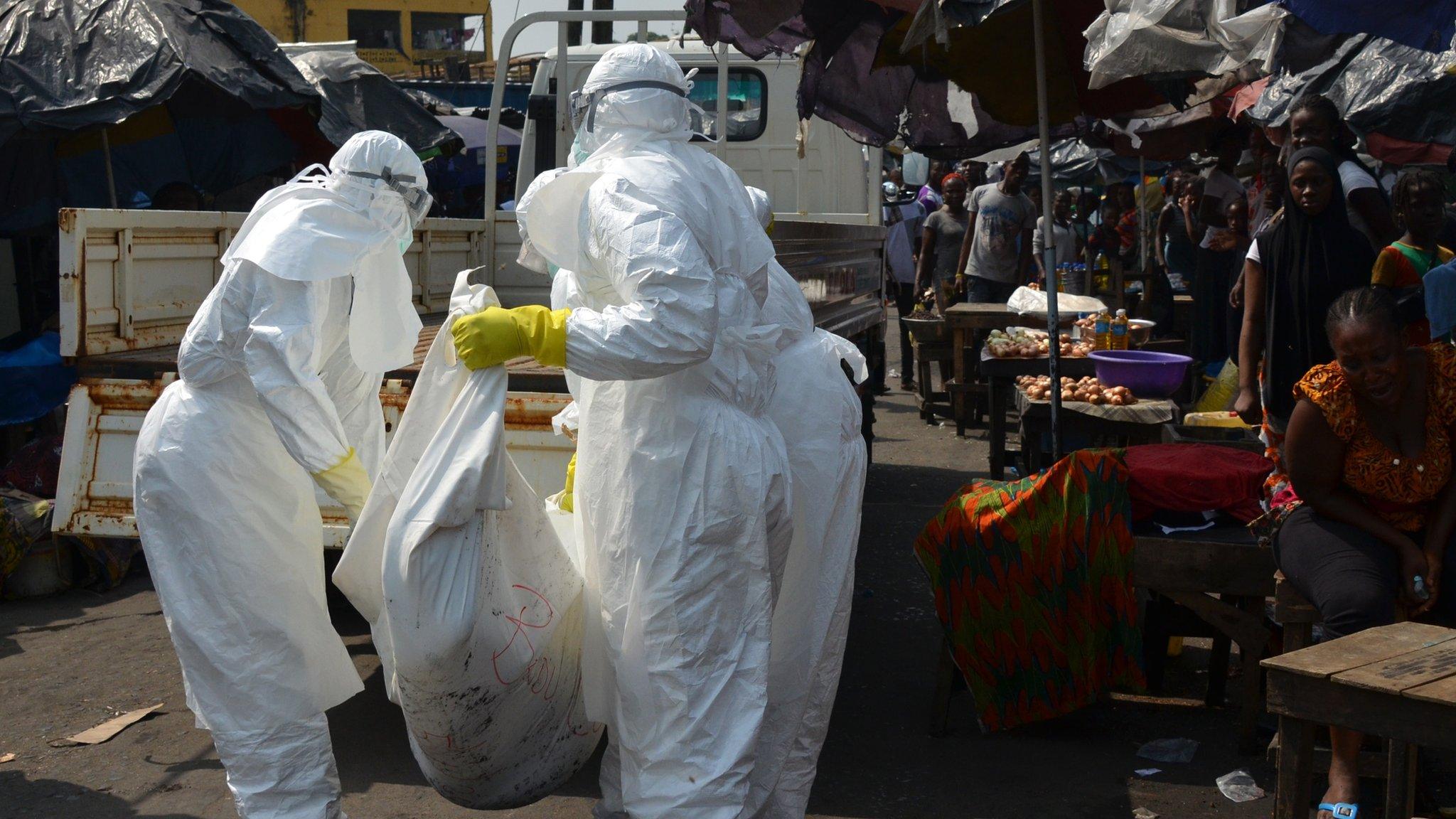How do experts classify the impact of disease?
- Published

Ebola has killed thousands
The Ebola virus in West Africa has killed more than 8,000 people since February 2014 and it has spread beyond the three countries initially affected.
The World Health Organization now believes a "turning point" might have been reached in the fight against the disease.
But how does the scientific community define the scale of the problem, and that of other of other transmissible diseases as they emerge?

What's the difference between an outbreak, epidemic and pandemic?
An outbreak, external is the sudden occurrence of a disease in a community which has never experienced the disease before, or when cases of that disease occur in numbers greater than expected in a defined area.
For example, when there is a sudden increase in the number of measles cases in a particular region, it is termed an outbreak.
An outbreak affects a smaller geographic region, probably a county or a city, but for infections not seen before, the term can be used for the entire region affected by the disease.
Ebola started off as an outbreak, since it was detected for the first time in West Africa. It is now being termed an epidemic due to its geographical spread and the number of people infected.
An epidemic is the occurrence of a group of illnesses of similar nature and derived from a common source, in excess of what would be normally expected in a community or region. The Sars epidemic, external of 2003 is a classic example.
Epidemics eventually spread out via means of long distance travel, migration of infected animals or aerosols.
Sometimes the speed of spread of disease determines whether it is classified as an outbreak or an epidemic. For example, the slow moving E.coli outbreak in 2011 in Western Europe in 2011 remained classified as an outbreak, even though many people were eventually affected over a wide area.
A pandemic refers to a worldwide epidemic, which could have started off as an outbreak, escalated to the level of an epidemic and eventually spread to a number of countries across continents. The 2009 flu (H1N1) pandemic, external is the most recent in human history. Airborne organisms seem to have the highest pandemic potential.
Two things that indicate the seriousness of an infectious disease are the number of people affected or killed, and the geographical spread of the disease.
However, no clear-cut number is assigned to any of these definitions.
Government policy may influence the label given to a disease. For instance, labelling a disease as an epidemic or pandemic could lead to travel restrictions and affect trade (exports). It can have a major impact on the disease-affected country's economy.
Sometimes governments and authorities do not want to call an outbreak an epidemic simply to avoid panic.

What are emerging and re-emerging diseases?
An emerging disease, external is one that has appeared in a population for the first time or one, which may have existed before, but is rapidly increasing in incidence.

Careful precautions can prevent the spread of Ebola
Middle East Respiratory Syndrome (MERS) is an example of an emerging disease. It appeared in Saudi Arabia in 2012, but now there are reported cases, external in the Middle East, Asia, Africa, Europe and North America.
Re-emerging diseases, external are those that have historically infected humans, but continue to appear in new locations or reappear after apparent control or elimination.
Most of the re-emerging disease agents appeared long ago and have survived and persisted in the environment.
For example, due to decline in vaccination against measles, the measles virus could re-emerge and affect a large number of individuals.
Thus it becomes important to continue vaccinating susceptible individuals against all bugs, which could re-emerge, unless the organism has been eradicated, for example smallpox.

What are the most persistent endemic diseases and why?
A disease is described as endemic when it is habitually present within a given geographic area.
For example, rotavirus diarrhoea is endemic in India, external, and Nipah virus, endemic in South-east Asia, more specifically Bangladesh.
There are several reasons why a disease could become endemic in a region.
The lack of vaccine or prophylactic treatment may enable the disease to linger.
Climate and geographical location also plays an important role in the survival of a disease-causing organism.
For example, Dengue is more likely to become endemic in a tropical region, where mosquitoes and water-logging are common.
The presence of animal reservoirs is another factor that could cause a disease to become endemic.
Non-human primates in Africa maintain the life cycle, external of yellow fever. This becomes a source of occasional spillover to humans and the disease remains in the area for a long time.
The presence of susceptible host and a low mortality rate may enable a disease-causing agent to become endemic.
If a virus kills a host, it has to look for another host to continue replicating.
If an affected region was cleared of susceptible individuals, by virtue of high mortality of the disease, the disease would die out eventually as well.
Finally, the duration of time that a virus can remain active outside the host in the environment is also important.
Some viruses such as HIV, external do not persist for long outside the host and are inactivated, whereas smallpox at room temperature could have remained infectious for years.

Arinjay Banerjee has written on this subject for The Conversation., external
- Published22 January 2015
